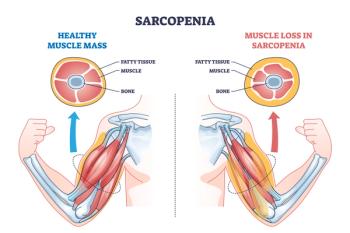
Study Finds Association Between Air Pollution and COVID-19 Hospitalization
Long-term exposure to particulate matter ≤2.5 μm (PM2.5) is associated with increased admission to the hospital for COVID-19.
Long-term exposure to particulate matter ≤2.5 μm (PM2.5) is associated with increased admission to the hospital for COVID-19, according to a recent
PM2.5, or the matter found in the mixture of particles and gases in air pollution, appears to potentially increase the risk of COVID-19 by acting as carriers for viruses such as SARS-CoV-2, by damaging airways’ epithelium and by impairing the lung’s ability to clear pathogens.
This particle may also increase the severity of existing COVID-19 by exacerbating respiratory and cardiovascular diseases through airway inflammation and free radicals’ release from alveolar macrophages activated by the phagocytosis of particles. The pathogenic effects of PM2.5 can be aggravated by their content in substances such as polycyclic aromatic hydrocarbons and heavy metals, according to the study.
Data from the study was recorded in two parts: from an estimated 10-year (2009-2018) PM2.5 exposure in the residential zip code of COVID-19 patients diagnosed at the University of Cincinnati healthcare system between March 13, 2020 and September 30, 2020.
Researchers were not able to obtain the exact address from the UC health system, so zonal statistics were used to aggregate annual PM2.5 exposure estimates in the zip code of the patients’ residential address over the 10-year period from 2009 to 2018.
Among the 14,783 COVID-19 participants included the study, those who were affected with the associated matters did also have pre-existing conditions and were more affected based on socioeconomic and geographic conditions.
To date, studies on exposure to PM2.5 and COVID-19 outcomes have been ecological and have correlated geographic rates of COVID-19 outcomes with geographic levels of PM2.5 exposure.
Additionally, 21.3% of participants were older adults aged 65 or older, 70.7% were women and 61.7% were non-Hispanic Whites. The comorbidities found in study participants included obesity (12.9%), diabetes (11.2%), asthma (8.5%), COPD (4.8%), hypertension (23.2%), CKD (5.8%) and neoplasm or a history of neoplasm (15.1%). About 13.6% of the patients diagnosed with COVID-19 during the study period were hospitalized, the study said.
The 10-year annual geometric mean of PM2.5 was 10.48 (1.12) μg/m3 and ranged from 7.02 to 12.32 μg/m3. Older adults, men, non-Hispanic Blacks and patients with comorbidities tended to live in areas with higher PM2.5 exposure levels. The 10-year annual average of PM2.5 was associated with an 18% increase in admission to hospital in all participants.
Though this study consisted predominantly of women, it was hypothesized that males may be at higher risk for SARS-CoV-2 infection as they have higher activity of angiotensin-converting enzyme 2 (ACE2), which serve as entry point to the virus in alveolar epithelial cells.
Sex differences in immune response profiles during COVID-19 have also been described: males may tend to have more innate immune cytokines, while females may have more robust T-cell activation. Also, men have been observed to be more at risk for worse COVID-19 outcomes.
Based on what has been found in the study, it’s recommended more stringent COVID-19 prevention measures may be needed in areas with higher PM2.5 exposure to reduce the disease morbidity and healthcare burden. Lastly, it’s encouraged future studies include study samples that are nationally representative and a better resolution of PM2.5 exposure at patients’ residential address to confirm these findings.
Newsletter
Get the latest industry news, event updates, and more from Managed healthcare Executive.


















































